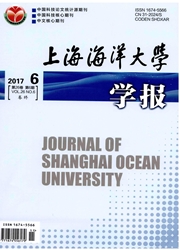

 中文摘要:
中文摘要:
不同生长型植物具有不同的性状特征,而植物的性状特征又决定了其对不同生境的适应能力。淀山湖是我国典型的富营养化湖泊,通过对淀山湖不同生长型沉水植物分布现状调查,及其特征性状的测定,分析不同生长型沉水植物性状特征对生境的适应性及其响应机制,探讨了富营养化湖泊逆向演替的驱动因子和未来演替方向。结果表明:不同生长型沉水植物在相同环境条件下采取了相异的策略,进而决定了其分布。大眼子菜型植物竹叶眼子菜干物质含量高,因而组织强度高,能在受风浪影响的大水体形成优势群落;小眼子菜型植物黑藻叶面积小、比叶面积大、叶面积/地上干重高且叶片集中于上层水体,在小面积水域具有极高的竞争优势,在湖湾极易形成致密的单种群落;苦草型植物苦草叶面积大,叶生物量主要分布于下层水体,在透明度低的水体中无法获得足够光资源,因而其群落在淀山湖消失。富营养化水体中具生存优势的沉水植物均具有叶面积小、叶片集中分布于上层水体等特征,这均有助于更好地获得上层水体光资源,表明水下可利用光源是水生植被演替的关键驱动因子。
 英文摘要:
英文摘要:
Plants of different growth forms have different plant traits, while plant traits determine their adaptive capacity to the environment. Dianshan Lake is a typical eutrophic lake in China. In order to find out the key driver in the succession of submerged vegetation and the future direction of succession, the research investigated the present state of submerged vegetation in Dianshan Lake, measured plant traits, analyzed the adaptive capacity and response mechanism .The results indicated that: submerged vegetation of different growth forms adopted different strategies, which determine their distribution. Magnopotamids plants Potamogeton malaianus could establish communities in large area of waters, because of its high tissue intensity. Parvopotamids plantsHydrilla verticillata, whose characteristics are small leaf, high specific leaf area, high specific leaf area divided by shoot dry weight and locating most leaves in upper water layer, were capable to exclude other species and form density communities in small area of waters. The disappearance of communities of Vallisnerids plants Vallisneria natans was mostly due to the traits of large leaf and locating most leaves at the bottom of water. Species capable to survive in eutrophic waters all had the traits of small leaf and locating most leaves in upper water layer, which helps to get the light in upper water layer. These results indicated that the available light underwater was the key factor to drive submerged vegetation succession.
 同期刊论文项目
同期刊论文项目
 同项目期刊论文
同项目期刊论文
 期刊信息
期刊信息
